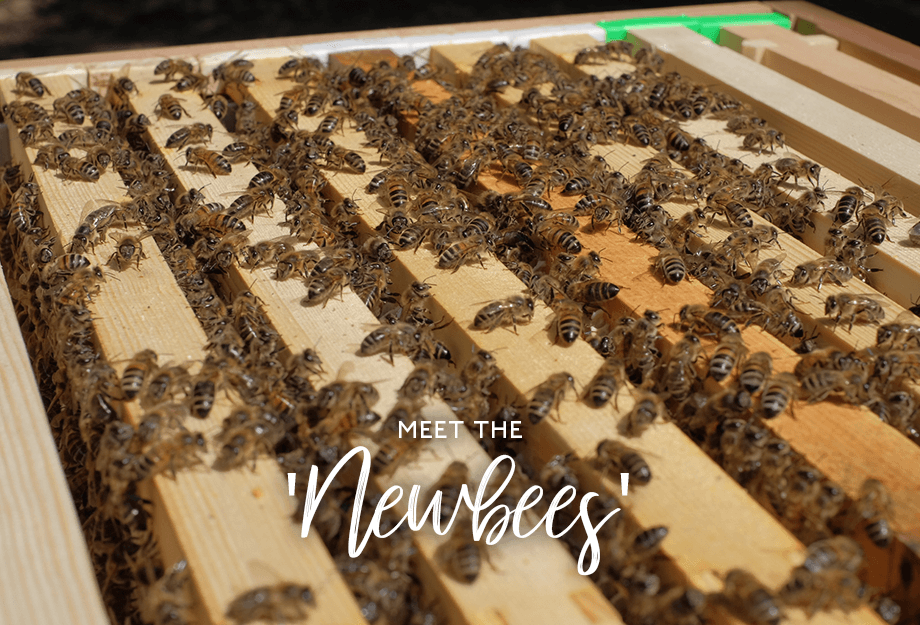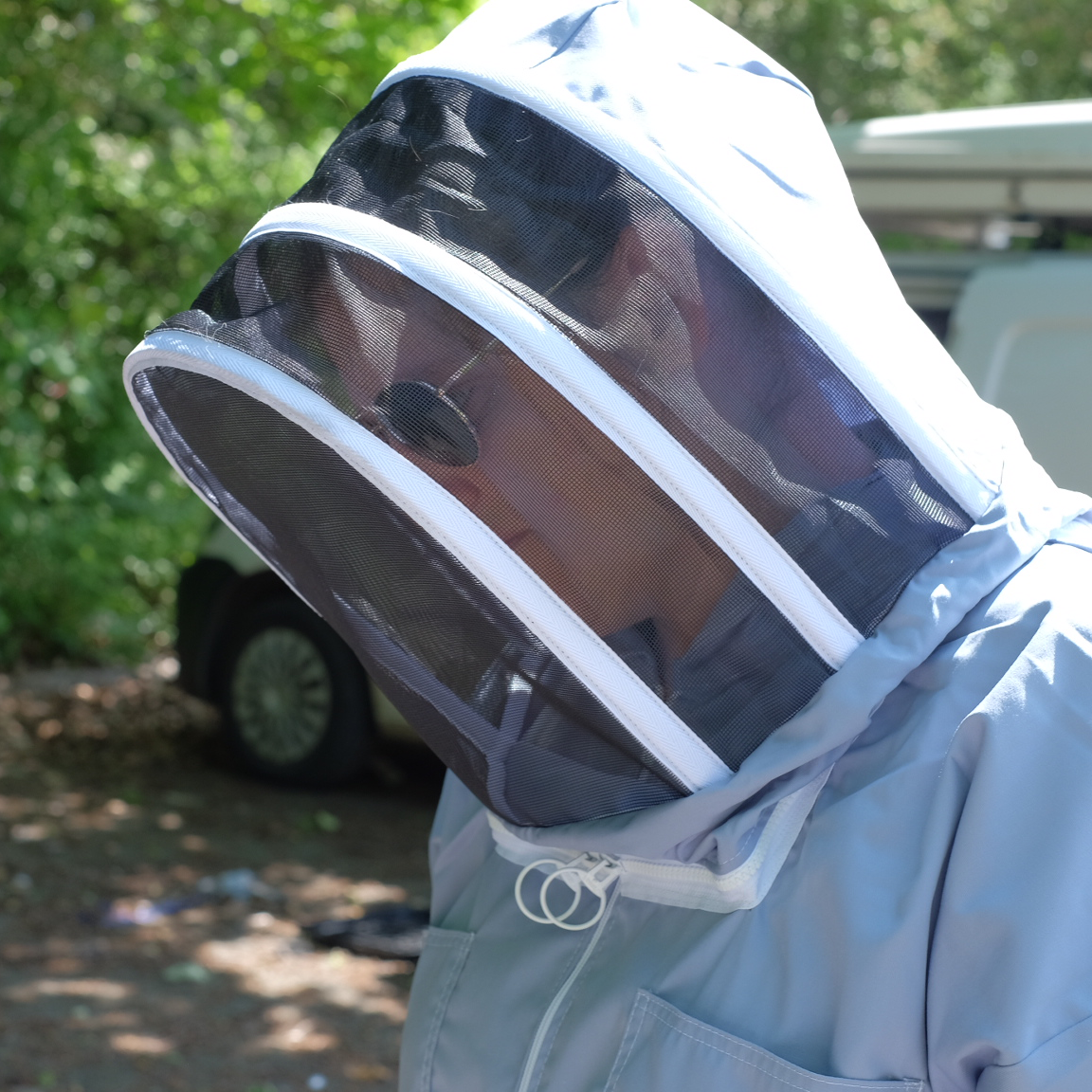Meet the 'newbees'

We're incredibly excited to introduce you to the newest members of the Arena Flowers family.
Hot off the back of World Bee Day, we have welcomed five colonies of honey bees to our site to boost the pollinator power in our local area.
Two members of our team will be spending the next couple of years learning everything about our new friends and how to help them thrive.

Darleen
"It would be an understatement to say I am excited to immerse myself into the captivating world of bees!
"What a valuable opportunity to learn about the intricate art of beekeeping, ensuring the wellbeing of our buzzing companions and witnessing first hand how their hard work contributes to the beauty and sustainability of our floral creations."
Beth
"My love of pollinators began with my parents, particularly my honey-loving dad. Our house was rarely without a jar of golden deliciousness in the cupboard.
"It was only as I got older that I learned just how vital pollinators are to the earth's survival. When we saw an opportunity to manage hives here at Arena Flowers, I jumped on the chance to become one of our beekeepers and see their important contributions to our ecology up close."
Can you spot the queen?

Every colony has a queen bee. While she isn't the only female that can lay eggs, she is the only bee in the colony that can lay fertilised eggs to produce more worker bees (females). The queen is distinguishable from the workers by her longer abdomen that doesn't usually have the signature stripes. Drones (males), which are produced from unfertilised eggs, are larger and rounder than workers.
Need a hint? She's near the left hand edge of the hive frame, encircled by workers.
 A queen will rarely leave the hive - when she does it's usually because the colony is swarming to a new location already identified by scout bees. Swarms are often seen waiting on trees, posts or fences, and that's because they're waiting for the scouts to come back. You can get in touch with a local beekeeper to collect the swarm - find one close to you on the British Beekeeping Association website.
A queen will rarely leave the hive - when she does it's usually because the colony is swarming to a new location already identified by scout bees. Swarms are often seen waiting on trees, posts or fences, and that's because they're waiting for the scouts to come back. You can get in touch with a local beekeeper to collect the swarm - find one close to you on the British Beekeeping Association website.
Did you find the queen? We've circled her above to make it easier to spot. Can you see how she has a longer abdomen, which is a more solid dark brown. Her long abdomen is for carrying fertilised eggs.
How else are we helping pollinators?
As well as supporting the planet with our managed hives, we're taking action to support all pollinators in our local area.
We are in the middle of a project to transform green spaces at our HQ with pollinator friendly flowers, as well as leaving some areas to let nature do its thing and form habitats that will benefit our local biodiversity.